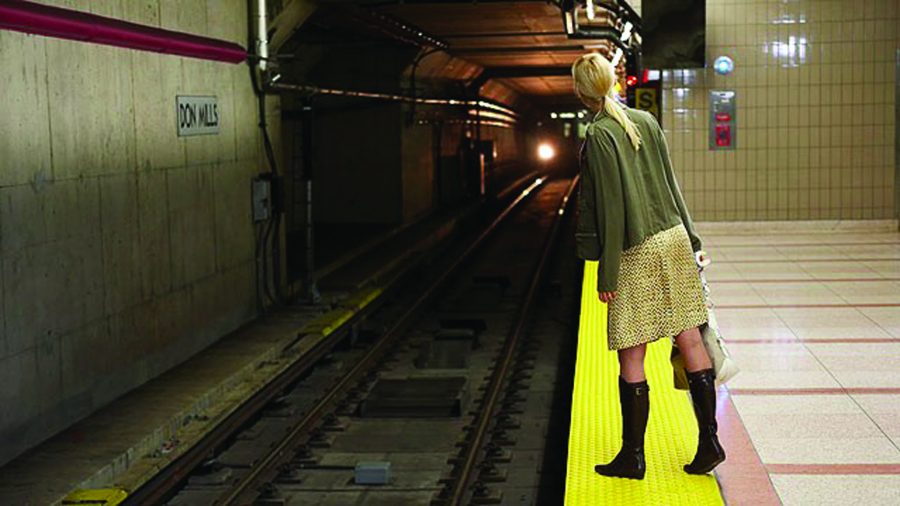Students returning to the city after a month-long break at home may find a new voice interrupting their morning commute. The tag, “Please stand away from the platform edge,” added hastily to a pre-recorded “There is a … train approaching the station” announcements, underscores a new anxiety New Yorkers face over the dangers of riding the city’s subways.
Indeed, an outbreak of subway deaths this year, from people being pushed onto the tracks to suicides, is reigniting calls for the MTA to move toward installing safety barriers and take other steps to protect commuters. Politicians and an MTA board member joined Manhattan Borough President Scott Stringer in asking the agency’s Inspector General to investigate the cause of the wave of deaths and the possibility of installing barriers.
“Our subway system is one of the largest and most traveled in the world, but we must also make it the safest,” said Stringer. So far in 2013, seven people have died after being hit by subways, and Stringer’s office projects a record-breaking 100 deaths this year if the trend continues. In 2011, out of a total of 146 commuters struck by trains, 47 were killed. And in 2012, the death rate steadily increased, with 55 killed out of 141 struck.
On the morning of Jan. 27, a man survived a suicidal leap into a Bay Ridge-bound R train in Brooklyn’s Fourth Ave./Ninth St. Station. Just days before, a woman jumped in front of an incoming 2 train in Times Square, where she died.
Suicide deaths in NYC’s subway system are not uncommon, with dozens every year, but a few recent high-profile cases of people being pushed to their deaths on subway tracks have stirred a lingering fear held by many city residents. On December 28th, a woman pushed a man to his death in front of a subway train. The man was standing on the elevated platform of a 7 train in Queens when he was pushed onto tracks. 31-year-old Bronx native Erika Menendez, who was said to have targeted the victim because of his religion, was charged with second-degree murder as a hate crime for this death.
On Dec. 3, 58-year-old Ki-Suck Han was shoved in front of a train in Times Square. That incident drew even more outrage and disgust after the New York Post ran a picture (taken by a fellow passenger) of the victim struggling to get onto the platform as the train approached. University senior Kristie Dash shared ,“When I am waiting on the platform now, I definitely think more actively about where I am standing in relation to the edge.”
The MTA’s only advice to commuters is to stay away from the platform edge. In 2012, the agency put up posters inside of subway cars informing riders of the previous years’ subway death rate, with the message “don’t become a statistic.”
But the MTA is also expanding its public education campaign, and will also examine other safety measures. In the past The MTA has looked at installing platform barriers. In 2007, Crown Infrastructure Solutions, an architectural and engineering firm, began talks with the MTA to build out a full network of barriers with no charge to the MTA or transit riders, in return for being able to advertise on built-in screens. The barriers would have been see-through and extend from the platform to the ceiling, with sliding doors that line up with the doors on the subway cars. Systems in Paris and Seoul, among others including Path trains in neighboring New Jersey, have installed screen doors on some platforms to prevent people from going onto the tracks.
In an interview, Professor Yoo Kwang-Kien, of Korea’s National University of Transportation, said Seoul’s emphasis on safety, including the screen doors, has led to only one accident, death or injury, per one billion operation hours.
“The MTA really just never moved forward on their part. We got as far as we could,” Michael Santora, president of Crown Infrastructure Solutions stated. “We never got any negative feedback from them that it wasn’t a good system, it’s just that no one’s ever made a real move for it,” he said. New York Transit riders and Santora hope the increased focus on subway safety might reinvigorate interest in New York.
Deliana Acosta, a university Junior, still thinks more should be done saying,“There should be more police officers patrolling the subways and even riding on them.”
The Transit Workers Union Local 100 passed out fliers late January asking the public to sign a petition on its website urging the MTA to take action. The union is also telling its workers to slow down trains as they are pulling into stations. But the MTA is fighting that directive. “Slowing down trains would create crowding conditions on trains and platforms, and would actually create a more dangerous condition,” said MTA spokesperson Kevin Ortiz in an emailed statement to Epoch News. The agency is prepared to argue in court that slowing down trains will slow the entire system down, along with alleging that the Union’s directive hopes to purposefully sabotage the agency.
While the MTA moves at a snail’s pace to resolve the issue, however, Director of University Security Richard Abbinanti provided some common-sense advice to students. “Stay away from the edge of the platform. Don’t be confrontational with unknown persons, just walk away and seek help,” he said, adding, “You may want to stay upstairs by the token booth and wait until the train pulls in and then go down and catch the train.”

